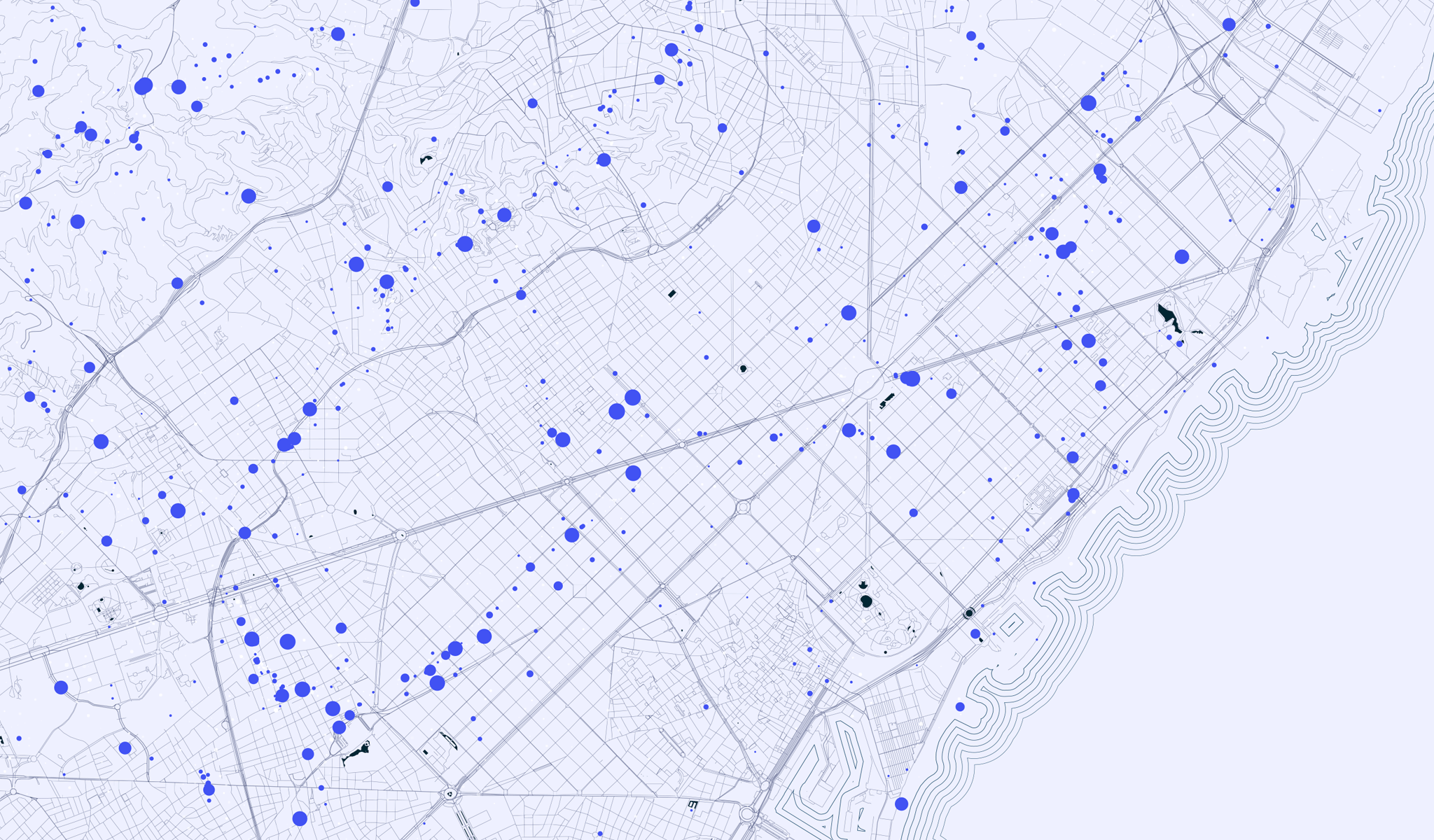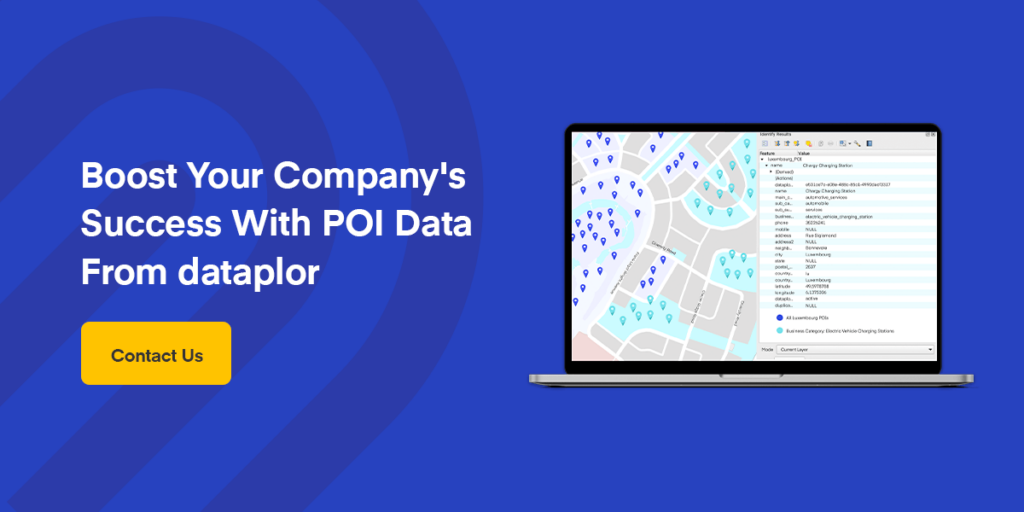
Top Applications of Point of Interest Data
Understanding common applications of point of interest (POI) data can help you discover its usefulness. From minimizing shipping time to expanding in the best locations, POI data helps you make the best decisions for your business. With POI data, you can make your company more efficient and your products or services accessible to a wider audience.
How Does Point of Interest Data Work?
POI data helps companies gather and analyze information about specific locations. This geospatial data reveals how people use certain locations, helping businesses optimize their services, marketing and branch sites. You can use POI data to analyze permanent locations such as national parks or temporary locations such as retail shops or public events.
What Makes Point of Interest Data So Useful?
POI data is incredibly useful because of the information it provides. You can gain the following insights from POI data:
- A location’s longitude and latitude
- Companys’ contact information and addresses
- A company’s primary business activity or industry category
- Location and surrounding area attributes such as infrastructure, nearby points of interest and average traffic patterns
- Typical number of visitors
- Types of visitors a location attracts
- How people use certain places
- How a location’s visitor profile shifts over time
Common POI Applications by Industry
The most common POI applications in business relate to business performance, strategy and efficiency. Various industries use POI data to analyze or predict their businesses’ performance in certain locations.
The data helps them analyze performance based on consumer behavior, delivery distances and proximity to competitors. With this information, they can then strategize plans and optimize locations for their benefit.

Retail
POI data allows retail companies to track brick-and-mortar store performance. It also provides insight into competitor store performance, helping businesses gauge where they perform well and how to improve. Your retail company can gain insight into the number of store visits, your store’s market share, competitor stores’ market shares and store efficiency and profit.
With POI data and its provided insights, you can do the following to improve your business:
- Choose the most successful store location
- Analyze market opportunities
- Understand sales dynamics in certain areas
- Perform competitive analysis
- Adjust your location strategy and manage store locations
- Increase employee engagement
- Optimize your distribution plans
- Implement regional advertisements
- Plan for successful expansion
- Attract new customers
When you know where your target audience lives and shops, you can place your retail stores where more people can visit or discover them easily. You can also implement the most effective marketing strategies by targeting your ads where your customer base is most likely to see them.
Quick Service Restaurants (QSRs)
Similar to retail stores, QSRs can use POI data to find the most profitable locations, understand customer behaviors and outperform the competition. POI data provides the necessary information for the following decisions:
- Determining a restaurant’s most profitable operating times
- Choosing the best expansion locations to add new restaurants
- Understanding how to attract more customers
Accurate POI data can reveal growing residential areas with the most opportunities for growth, and it can help you discover where your business will be most successful.
Mapping
Reliable navigation is essential for numerous businesses. For example, food-delivery and ride-share companies rely on POI to meet or exceed customer expectations. If you operate one of these services, precise travel estimates help your company’s employees provide on-time arrivals.
Consumer Packaged Goods (CPGs)
If your company sells consumer packaged goods, your top priority is determining where you can reach the most customers. POI data can help you accurately predict your addressable market within a particular area. It provides insight into factors such as:
- Consumer preferences and behavior
- Regional trends
- Competitor presence
- Market saturation
- Sales potential
CPG companies can use POI data to plan expansion efforts successfully. For example, if you want to advertise a new sports drink at a football stadium, you can use POI data to analyze the stadium’s visitation patterns and strategize the best times and methods to display your advertisements. POI data can also help you decide which product lines to sell and how much you should invest.
Third-Party Logistics
The e-commerce industry relies on third-party logistics and POI data to fulfill and deliver orders efficiently. With accurate POI data, your company can perform the following tasks:
- Track fleet movements
- Map residential areas and optimize fleet routes for efficient delivery
- Address blank sailings effectively
- Analyze coverage and choose appropriate pick-up and drop-off points
POI data makes it easy to minimize travel time and distances. It provides insights into warehouse, store and delivery locations so you can choose the best routes for customer satisfaction, fuel reduction and decreased travel costs.
Fintech
POI data is essential in the finance and insurance industries. Financial technology (fintech) consists of cloud computing, artificial intelligence, blockchain and big data systems that help firms make strategic decisions. POI data enhances these systems with precise information and insights. If your business is in the financial industry, you can use POI data to:
- Determine the best locations to open bank branches
- Increase a region’s ATM coverage
- Target advertising to the right audience
- Complete competitive analysis
- Identify investment opportunities in specific regions
- Analyze market share dynamics
If you manage an insurance company, POI data can help you perform risk assessments for specific areas. With this data and the information it reveals, you can develop the most beneficial policies to safeguard individuals and help you minimize financial risks. Mapping structures in disaster-prone areas allows you to increase policy premiums where damage is likely. You can also use POI data to enhance verification processes for greater fraud detection.
Real Estate
POI data also significantly benefits real estate investing. You can analyze important factors with POI data before renting or buying property, assessing property valuation accurately. Renters and homebuyers typically prefer properties in close proximity to the following:
- Schools
- Parks
- Shopping facilities
- Amenities
- Local attractions
- Hospitals
- Local business opportunities
The more desirable your investment properties are, the higher your return on investment is. POI provides the data you need to choose the most profitable properties based on location factors, and it can help you predict real-time real estate trends and pricing.
Boost Your Company’s Success With POI Data From dataplor
Understanding the applications of POI data reveals how beneficial it is. Analyzing POI data can help you optimize location, attract more customers, boost efficiency, outperform your competition and increase profits. dataplor offers globally-scaled and human-reviewed POI data to help your company grow and expand successfully.
Our data is human-reviewed, so you receive the most comprehensive and accurate data possible. We also ensure data is certified for privacy, and we don’t collect personally identifiable information, foot traffic data or spending data.
Contact us to learn more about how our data services can enhance your business.



